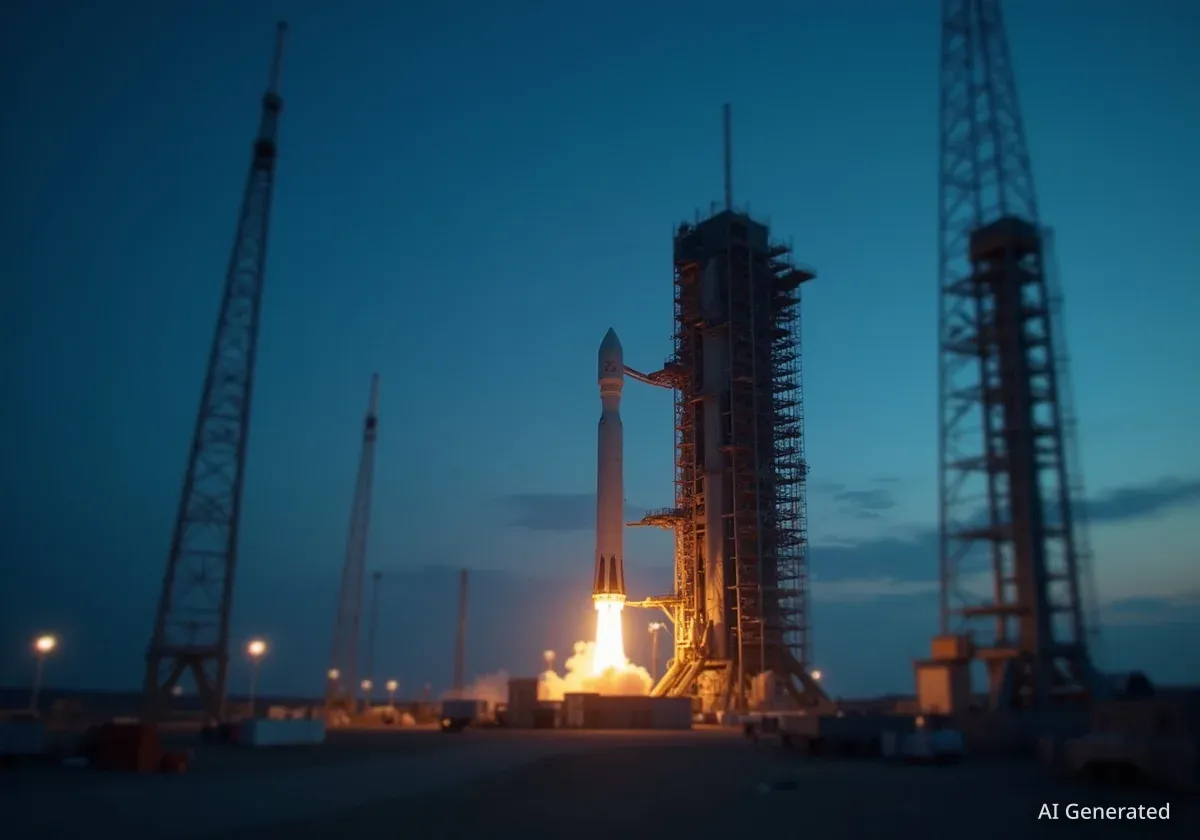NASA's ambitious plan to establish a permanent human presence on the Moon, known as the Artemis program, is encountering significant challenges. Delays with key private partners and a looming international deadline are forcing the agency to re-evaluate its strategy, creating a new kind of space race defined by technology and timelines rather than Cold War politics.
Key Takeaways
- NASA's Artemis program, aimed at returning humans to the Moon, is facing critical delays from its primary contractor, SpaceX.
- The program's urgency is heightened by a joint China-Russia plan to establish a lunar base by 2030.
- Frustration over the pace of progress has led NASA to diversify its partnerships, awarding a major contract to Blue Origin.
- This new space race is less about national pride and more about technological endurance and meeting strategic deadlines for lunar settlement.
The New Race for the Moon
More than 50 years after the Apollo missions, the United States is once again focused on the Moon. However, the landscape has changed dramatically. The current push is not just a race against a single rival but a complex effort to secure a strategic foothold in space before other nations do.
The primary catalyst for this renewed urgency is a collaborative plan announced by China and Russia to build a permanent base on the lunar surface by the end of this decade. This geopolitical pressure prompted NASA to prioritize its Artemis program, an initiative far more ambitious than its predecessor. The goal is not just to plant a flag but to create sustainable infrastructure for long-term human habitation and research.
From Apollo to Artemis
Unlike the Apollo program, which was a direct government-led effort, Artemis relies heavily on a public-private partnership model. This approach is designed to foster innovation and reduce costs, but it also introduces new dependencies and potential points of failure if commercial partners cannot meet demanding schedules.
Partnerships Under Pressure
To achieve its goals, NASA initially placed a significant bet on SpaceX. In 2021, the agency awarded Elon Musk's company a $2.9 billion contract to develop the critical components for a lunar landing, including the Starship vehicle and a functional landing system. This decision marked a major shift, entrusting a private entity with a cornerstone of America's space exploration future.
However, the collaboration has been marked by what agency officials describe as faltering progress. Technical delays have pushed back timelines for crucial missions. The Artemis program is structured in three main phases: Artemis I, an uncrewed test flight which was successful; Artemis II, a crewed flyby of the Moon; and Artemis III, the mission intended to land astronauts on the lunar surface, originally targeted for 2025 but now expected no earlier than 2027.
According to Sean Duffy, an acting administrator at NASA, the agency has expressed disappointment with the pace of development and is actively seeking other collaborators to ensure its objectives are met.
The persistent delays have cast doubt on whether the Artemis II and III missions can proceed as planned, putting NASA's lunar leadership at risk. This internal race against the clock has become as critical as the external race against international competitors.
Diversifying the Strategy
Faced with mounting pressure and a non-negotiable geopolitical clock, NASA has begun to hedge its bets. The agency is no longer relying solely on a single provider for its Human Landing System (HLS). In a clear signal of this strategic shift, NASA has reopened contracts to foster competition and build redundancy into its lunar architecture.
Major Investment in Competition
In 2023, Blue Origin, the space company founded by Jeff Bezos, was awarded a $3.4 billion contract to develop a second human landing system. This move is intended to ensure NASA has multiple viable options for reaching the lunar surface and reduces the risk of the entire program being stalled by a single contractor's delays.
This decision underscores a fundamental reality of the new space race: it is a marathon of engineering and endurance, not a sprint for political points. Success depends on having reliable, tested technology ready for deployment. Agency officials have maintained respect for SpaceX's ingenuity but emphasize that timelines and mission alignment are paramount.
The Path Forward
The coming years will be a critical test of this new, multi-partner approach. The success of the Artemis program now hinges on the ability of both SpaceX and Blue Origin to deliver on their promises. The key milestones include:
- Artemis II: The first crewed mission of the program, which will send astronauts on a trajectory around the Moon. Its launch is a prerequisite for any landing attempt.
- HLS Development: Both SpaceX's Starship and Blue Origin's lander must undergo rigorous uncrewed testing before they are certified to carry astronauts.
- Meeting the 2030 Deadline: As international efforts advance, NASA's ability to establish a presence on the Moon before the end of the decade is a primary strategic driver.
As NASA navigates these complex partnerships and tight deadlines, the race to the Moon has become a compelling drama of innovation, competition, and strategic necessity. The outcome will not only determine who leads the next era of space exploration but will also shape humanity's future beyond Earth.





